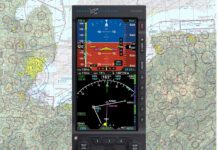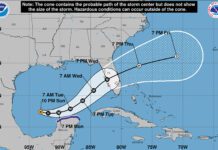By the time you read this, the U.S. airshow season will be in full swing. Already, Sun n Fun has come and gone; AOPAs fly-in is scheduled for shortly after this issues deadline and the Experimental Aircraft Associations AirVenture extravaganza in Oshkosh, Wis.,-the granddaddy of all fly-in airshows-is coming up. Any number of other events are planned, too.
All of these fly-ins have one thing in common: A relatively large number of aircraft will attempt to arrive during a relatively short time span. For that purpose, event organizers and the FAA often create a set of arrival procedures designed to provide some order to the chaos. These procedures are published as Notices to Airmen (Notams).
But not everyone plays along. Ive lost count of the times at these shows that Ive heard someone use the radio to ask for basic information easily found in the Notam. More to the point, Ive also seen dangerous behavior and reckless disregard for the published procedures. Like the homebuilt amphib that blew through the Sun n Fun arrivals in 2002, headed in the opposite direction.
The controllers working the shows have some blame to shoulder, too. For example, why release a lumbering, 80-knot biplane from Lake Parker to fly the Sun n Fun approach and put three high-performance singles behind him? The ugly results are S-turns, wide patterns flown for spacing and higher-than-necessary workloads for three of the four pilots involved. Controllers working these shows need to keep in mind the performance differences of the various aircraft theyre handling. They shouldnt plan for the draggy biplane to keep up its speed all the way to the runway, or expect the Lancair to go into hover mode just because doing so fits their idea of the flow.
If youre planning to fly yourself to one of these airshows, some basic planning is in order. First, secure a copy of the associated Notam. The FAAs Web site (www.faa.gov/NTAP/index.htm) is the best source. Print out a copy, read it and understand it. Then take it with you. Second, get some practice in slow flight, tight patterns and spot landings before you launch. Third, arrive with plenty of fuel-divert if you get marginal while holding. Fourth, monitor the designated frequency, keep your head on a swivel, looking for other traffic, and pay attention to whats going on around you. Finally, dont forget to fly the airplane or lower the landing gear.
If thinking about how you will do some or all of this makes you uncomfortable, Ive got a simple solution: Dont. This is not amateur hour-50-hour-a-year pilots need not apply. If your slow-flight skills are rusty and you cant put the airplane down within 100 feet of your target, stay home or go to an outlying field. Many experienced and capable pilots refuse to fly into these shows because of the increased risk from the unprepared pilots sharing the air. By not being prepared for this environment, you endanger your passengers and everyone else in the vicinity.
Flying into a large airshow can be the best way to get there: Just-please-know what youre doing. The life you save may be mine.

-Jeb Burnside



